I am going to change format a bit here. I will not give a general intro to The Captain is Dead by JT Smith and Joe Price, published by AEG. Instead, I want to set the scene by addressing a criticism of the game echoed by, among others, Ronny over at Co-Op Board Gamers (which, by the way, is a great site which you should go visit immediately after finishing this review). He admitted that he wasn’t jazzed about this game at first because it was “very similar to Pandemic”.
When I hear that a game evokes Pandemic so strongly, I get excited! I also don’t get worried. Not even a little bit. Certain games are, at heart, so simple and mechanically tight that you can freely iterate on the core design and come up with all sorts of great variability. Simple yet elegant design is, in fact, part of the secret sauce that makes up our truly classic games. Carcassone, Ticket to Ride, Catan, Dominion, and, yes, Pandemic (in your face, Pandemic haters!) are all simple games that have inspired many sequels, variants, and knock-offs. Some of those variants are truly excellent!
I think of Pandemic less as a game – though it’s a terrific game – and more as a game chassis, an interlocking yet malleable framework upon which a lot of innovation could happen.
So while I get Ronny’s sentiment, I’d like to tweak it a bit. Rather than worrying about any potential similarities between this game and Pandemic, I’d like to accept such similarities as given. From there, I can assess how much it does with the Pandemic “system,” then figure out if it does enough to mark itself as something worth seeking out.
The Basics
In The Captain is Dead, you play crewmembers on a spaceship which has just been assaulted by hostile aliens. The aliens killed your ship captain and damaged your ship’s “jump core,” which I suppose is a fancy name for the engine. As a crew, you have to repair the jump core while surviving all sorts of horrible things happening – aliens boarding the ship (like Pandemic disease cubes), key systems failing, getting injured, etc.
Each character has four actions per turn in which you could move, use various powers granted by the ship system, and repair systems that have been damaged. You also collect cards that enable certain actions on the ship. After every player turn, that player draws from a separate enemy deck that create further system failures or alien assaults.
As in many co-op games, players can lose in multiple ways – lose your ship shields, become overrun by aliens, or run out of cards in the enemy deck. Players can only win by collecting one type of card (Engineering cards) and using them to fix the jump core.
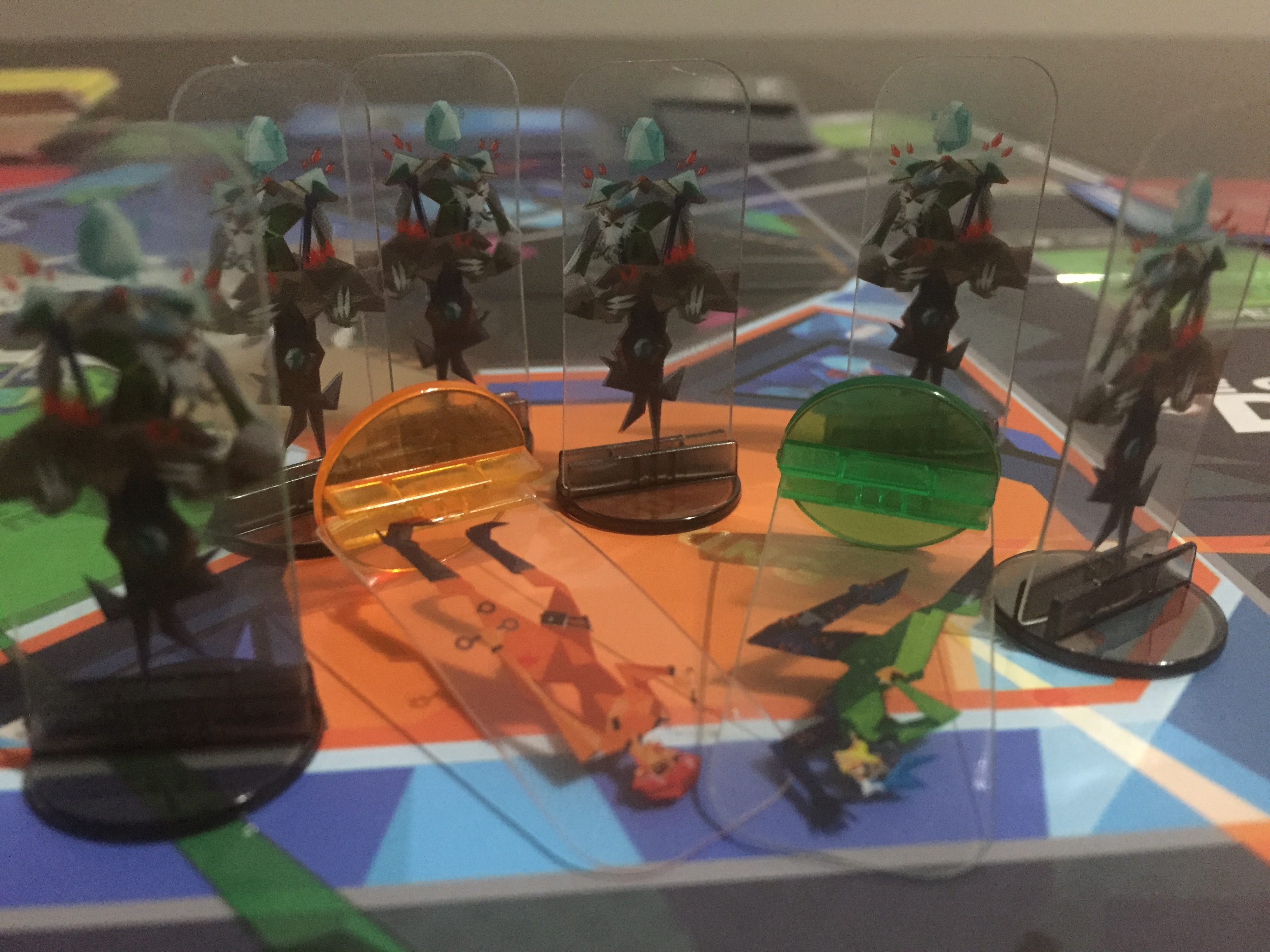
How The Captain is Dead Works like Pandemic
Co-op games come in many forms. I can think of three essential elements, though, that distinguish a Pandemic-style co-op:
- Multiple, distinct areas of the game board are going to hell at once, with increasing speed as the game progresses
- Players all have the same number of actions on their turns, from which they select from a closed set of choices.
- The game forces players, turn by turn, to choose between addressing immediate crises and moving towards the game’s ultimate goal.
Some less essential elements that this game borrows from Pandemic are:
- Players accomplish the goal by collecting and spending sets of cards (Flash Point: Fire Rescue is a Pandemic-type game that doesn’t have cards).
- Individual player powers provide unique options for actions on a turn.
- Overall player power does not increase as the game moves along. You’re taking the same actions on turn 15 that you did in turn 1.
Whether playing this game solo or co-op, these elements come together to elicit the feeling of a large puzzle that the players must solve. It’s not a calm, sudoku-on-a-Sunday puzzle, either. The constant need to triage crises, or decisions to ignore crisis and move towards the ultimate goal, all create fantastic, turn-by-turn tension.
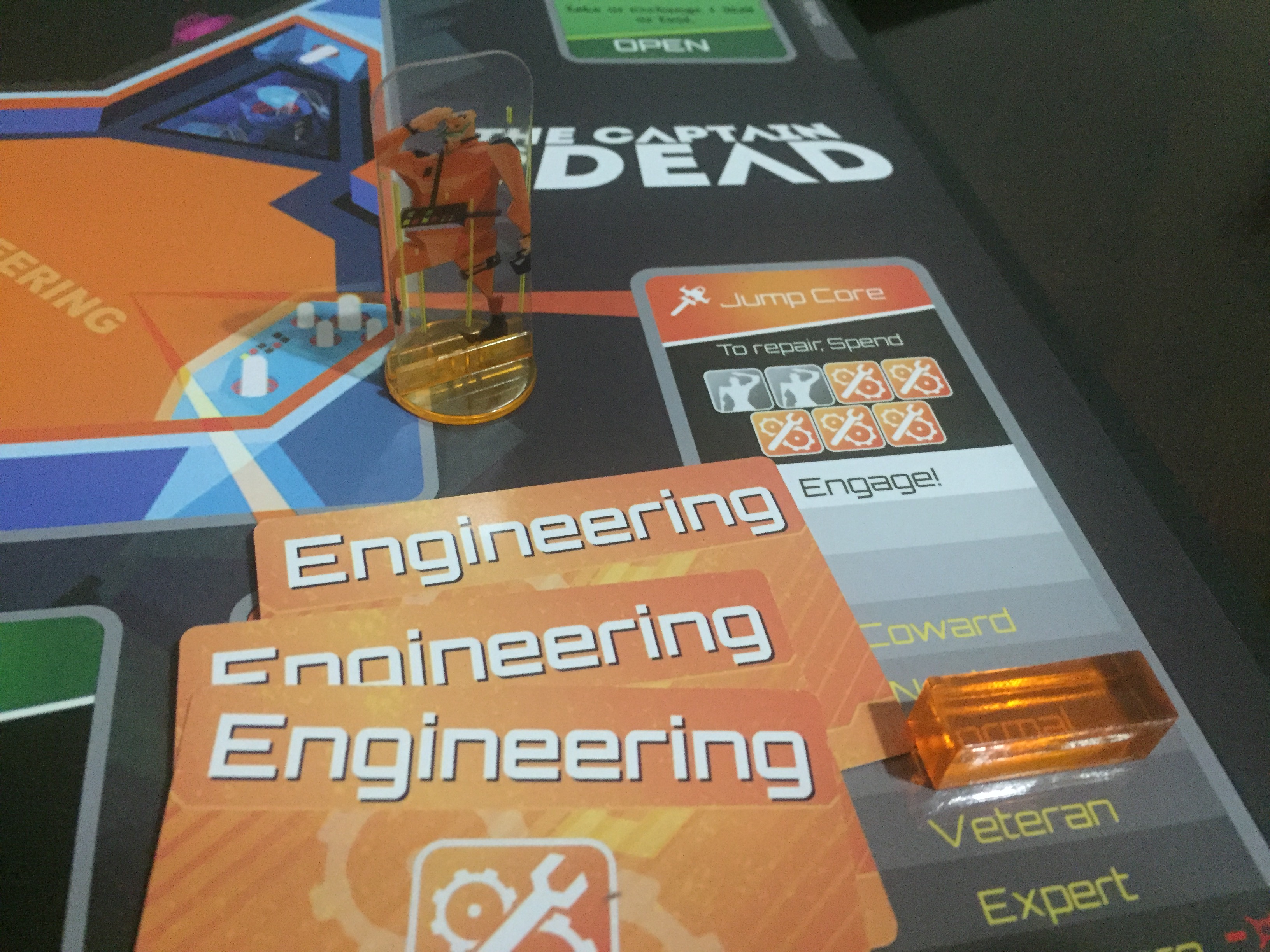
What The Captain is Dead Does Differently
I watched Star Trek when I was a kid, but I wouldn’t call myself a fan. I barely remember the episodes. However, I’ve been told that this game replicates some of the more dramatic ship attacks on that show. So, bravo!
Mechanically, the different ship actions provide universally accessible player actions to complement each individual’s player powers. Ship systems allow players to teleport around the ship, draw special tactics cards that provide one-time advantages, trade cards from anywhere, upgrade the ship itself, launch rockets at alien ships, and more. The enemy cards will very often damage, or even destroy, these systems, which reduces in-game player options. Players then have to decide whether they need to repair a certain damaged system, or to prioritize other tasks.
What I Liked About The Captain is Dead
I love Pandemic. Regular readers of my blog (all seven of you) know that Pandemic is my favorite game. A co-op would have to really screw up the formula in order for me to not like it. As I discussed above. The Captain is Dead faithfully follows many of the key elements that make Pandemic great. Games can generate a lot of frustration by getting out of hand fairly easily. However, repeated plays and growing familiarity with the different roles allow for players to slowly get better at it. The difficultly scaling mechanism (how many times you have to repair the jump drive) is easy to implement and works very well.
Speaking of the different roles, there are a LOT of them in the box – 18 in all! You could play many, many games of this without seeing the same old mix of powers. Although some roles are clearly better than others, they all shine in their own ways and can be effective in the right teams.
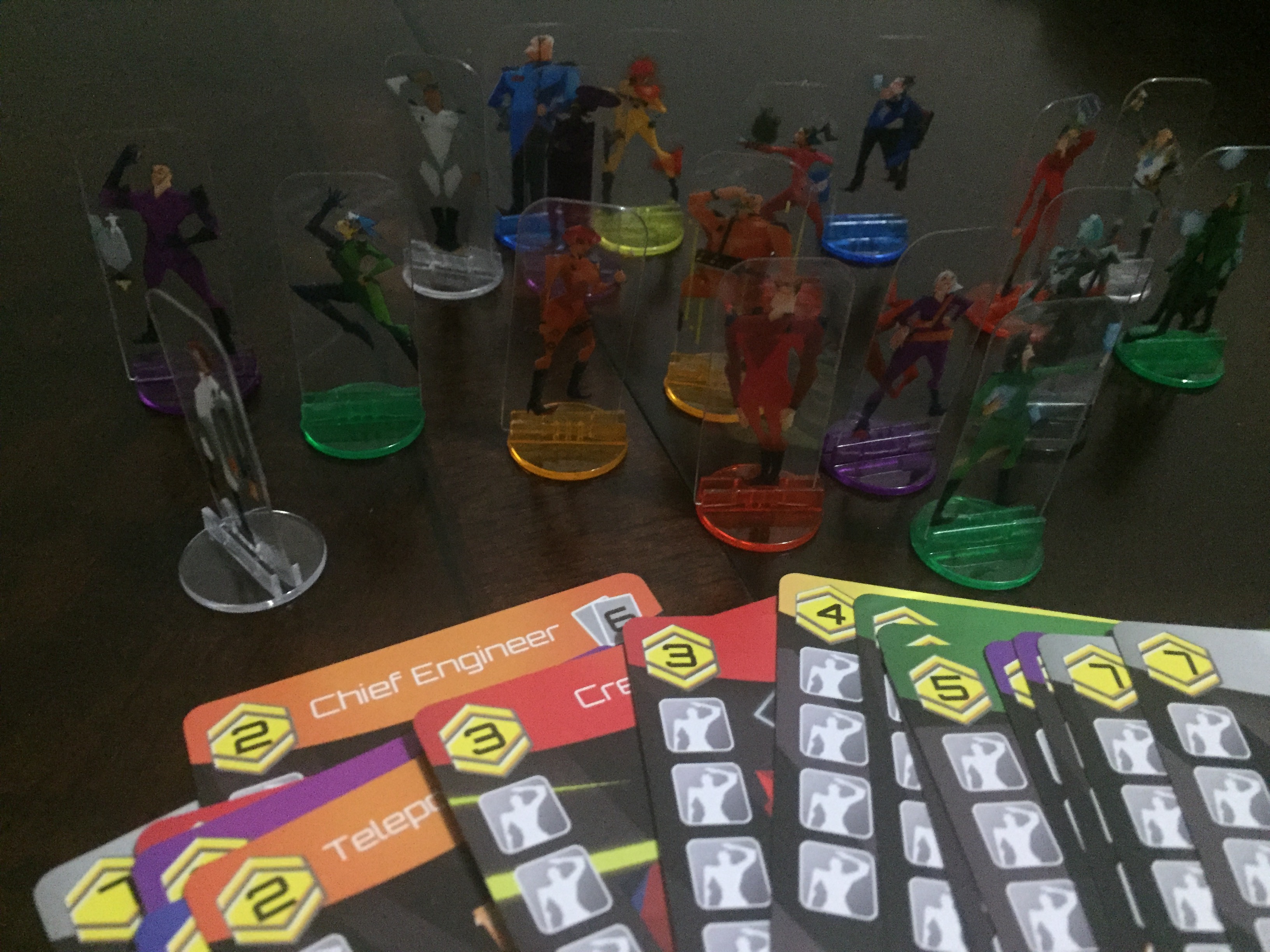
Finally, and probably most importantly, the ship systems really do a lot to distinguish this game from Pandemic and other games like it. Using them feels awesome, losing them feels like gut punches, and getting them back feels triumphant and/ or relieving, depending on the state of the game.
What I Didn’t Like about The Captain is Dead
Throughout this entire review, I have studiously avoided talking about component quality. The plastic standees look cheap, come apart too easily, and can be confused with one another during game play without squinting at them. The artistic approach of the whole game wants to evoke a 60s space show with cartoony, angular character art and heavy use of primary colors. The card and character art are fine. However, I felt a bit of eye strain staring at the board.
As a Pandemic-style co-op, this game leaves itself open to an Alpha-player problem. Lots of newer designs contain tricks to discourage alpha gaming (hidden informations, timers, etc.) which this game does not use.
As a solo, you take out the alpha gamer problem yet introduce the problem that the game’s ideal character count is 3+. That means you should get ready to three-hand this thing as a solo player. Card randomness has an outsized effect on two characters, while the game is probably impossible with just one character.
The ship systems, which I regard as a net positive for the game, nevertheless create a huge issue near the endgame. I can guarantee that event cards outpace what you can do, leading to many destroyed ship systems at endgame. This will make your character less powerful as the game progresses. I love that some co-ops (particularly dungeon crawlers and adventure games) have players grow in power over time. I don’t mind that, in these type of games, player power remains generally static. However, I encountered occasional turns where I couldn’t do anything except crawl around because a sequence of enemy cards punched my poor crew member in the face. The game designers clearly intended for this to happen. Sometimes I welcomed the challenge, but other times I was frustrated by the lack of tools and options at my disposal.
Finally, the strategy tips in the rulebook encourage players to be “couch potatoes”. They mean that movement in this game represented suboptimal use of action economy. To be sure, you don’t want to spend all of your action points on movement in these type of games. However, some characters perform their best when they spam their special action, turn after turn, while not moving at all (observe the Weapons Officer, pictured below). The game’s ship systems open up all of these options for potential use. However, conditions in the game lead to you sitting there and not using any of them besides what your personal card tells you to do. Seems like kind of a miss, design-wise.
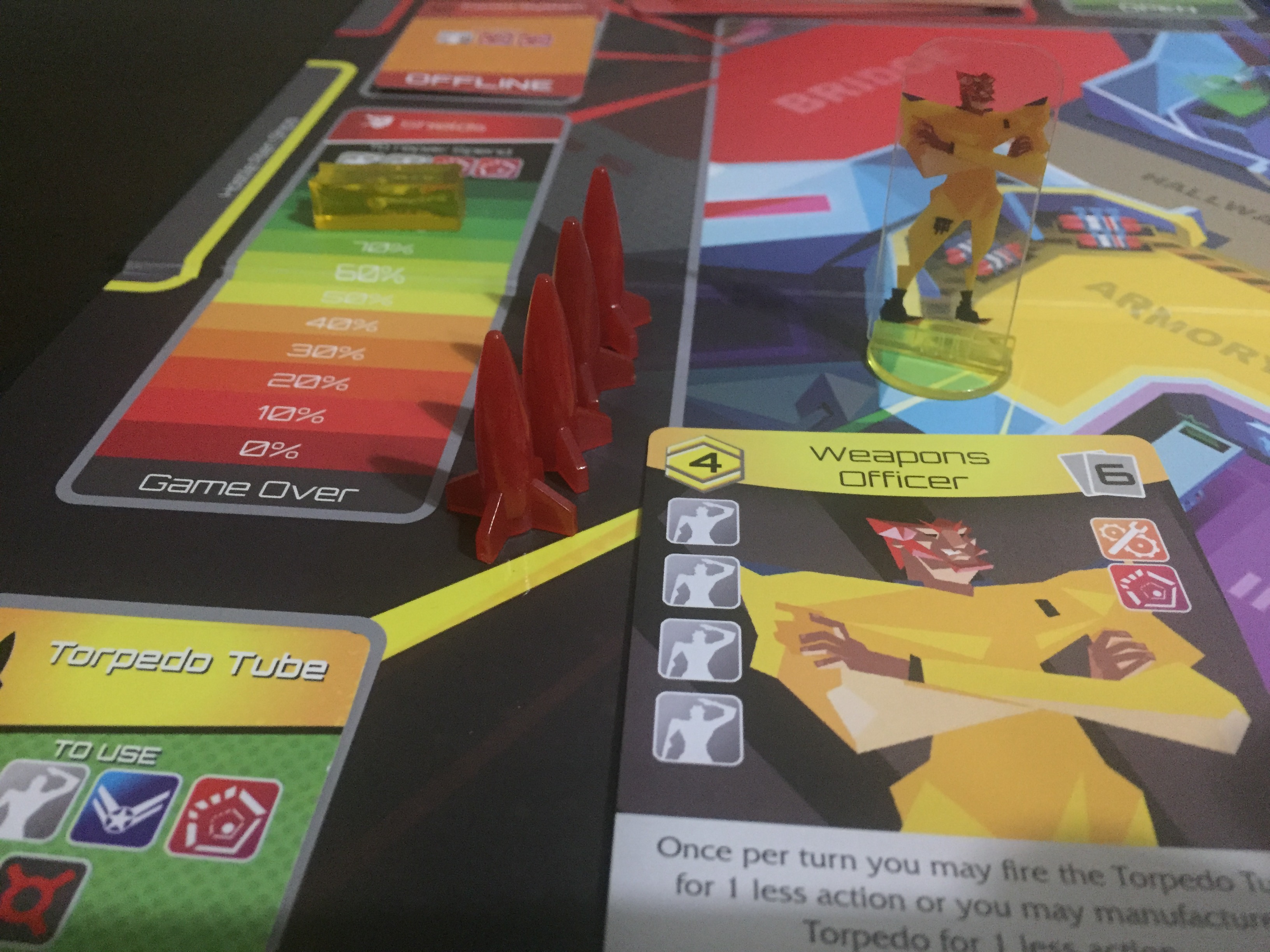
Final Verdict
I realize that my review leaned heavily on an extended Pandemic comparison. That might not have been the most fair way to approach this review. However, I can’t deny that playing The Captain is Dead put me in the same headspace. I don’t think that’s at all bad. I like the game, overall. The theme is fun. The ship systems, for whatever issues I found, do enough to spice up the formula and make it a worthy purchase for those looking a good space-themed, tense co-op.
SUMMARY & RESULTS
A good, Pandemic-style co-op that does enough, both in terms of theme and mechanisms, to distinguish itself. Definitely recommended for those who want to cooperate and solve a tense puzzle in space.
7.0
Play


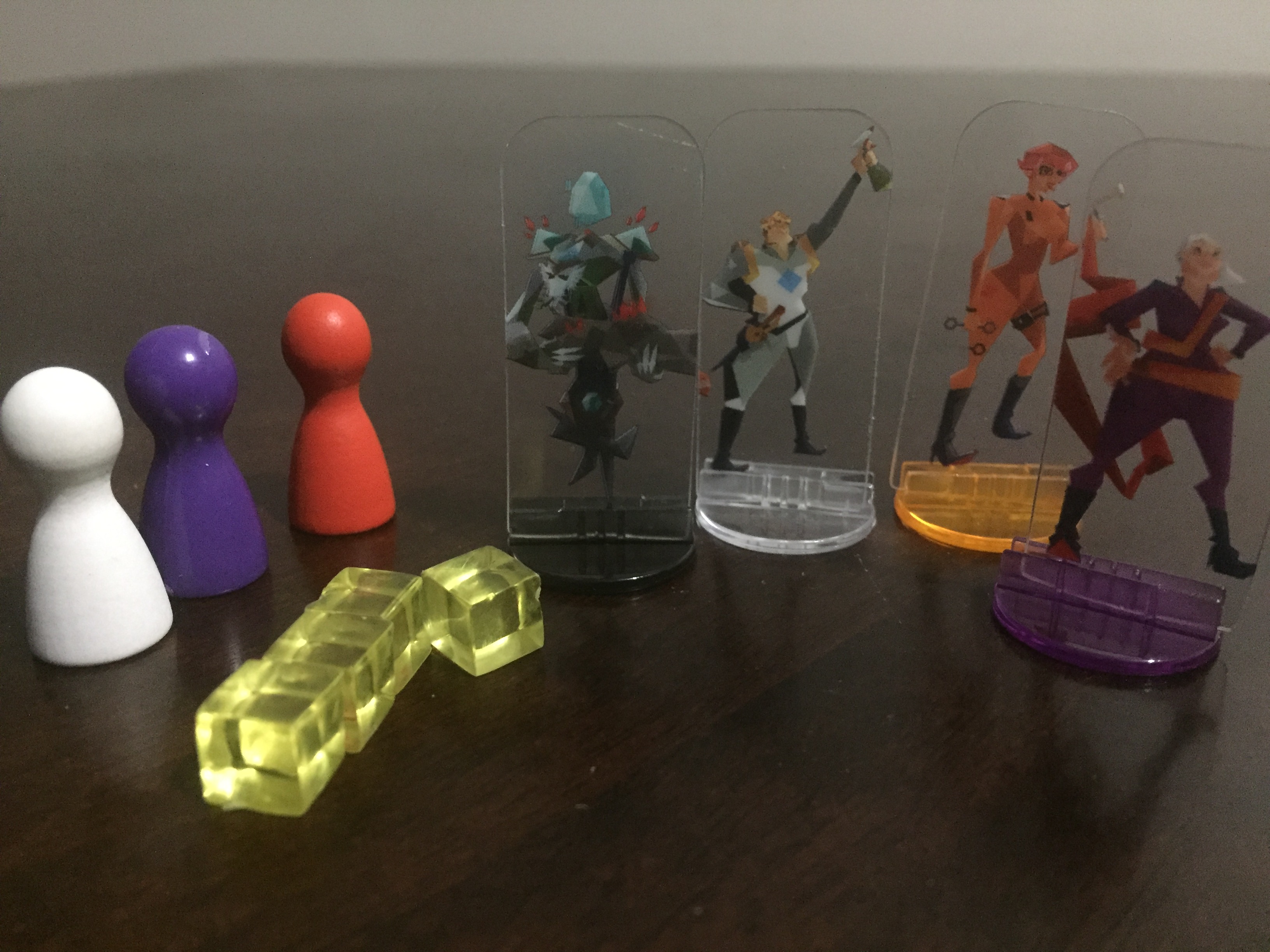
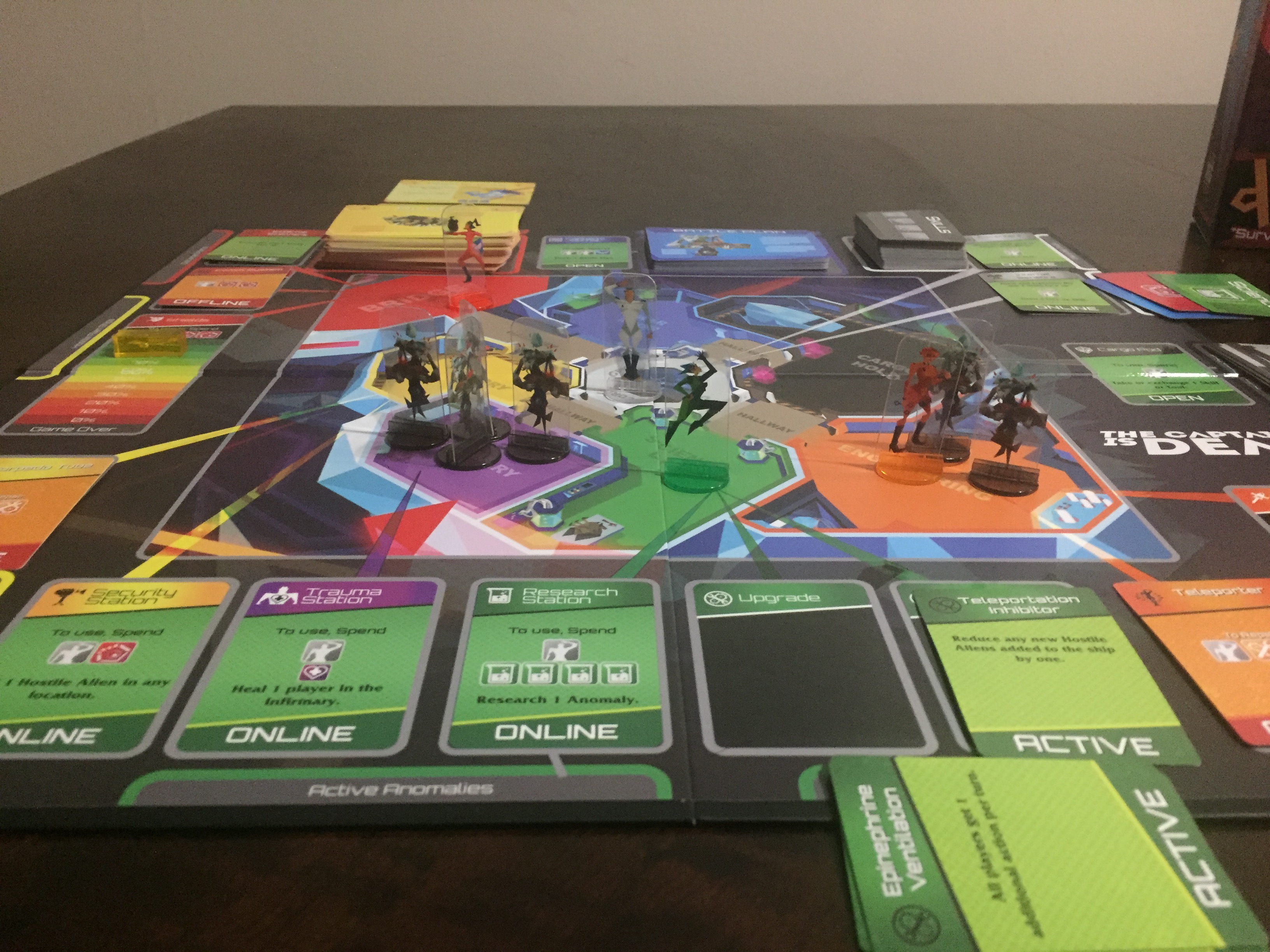





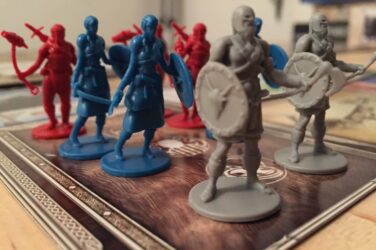
Show Comments